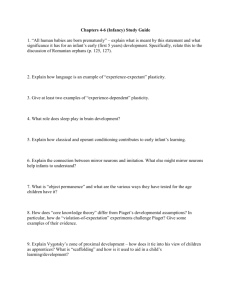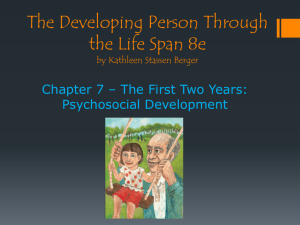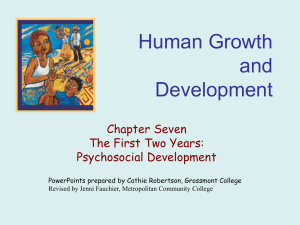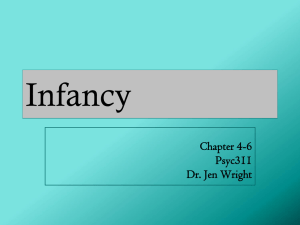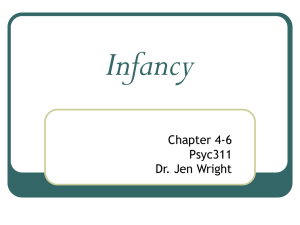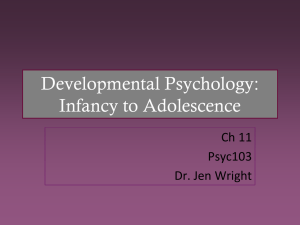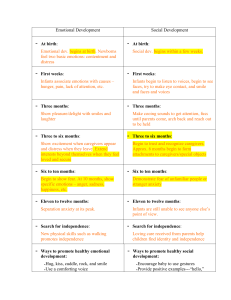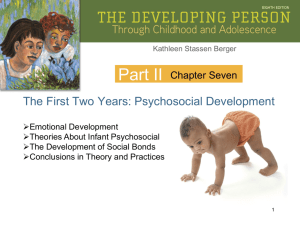First Two Years: Psychosocial Development
advertisement
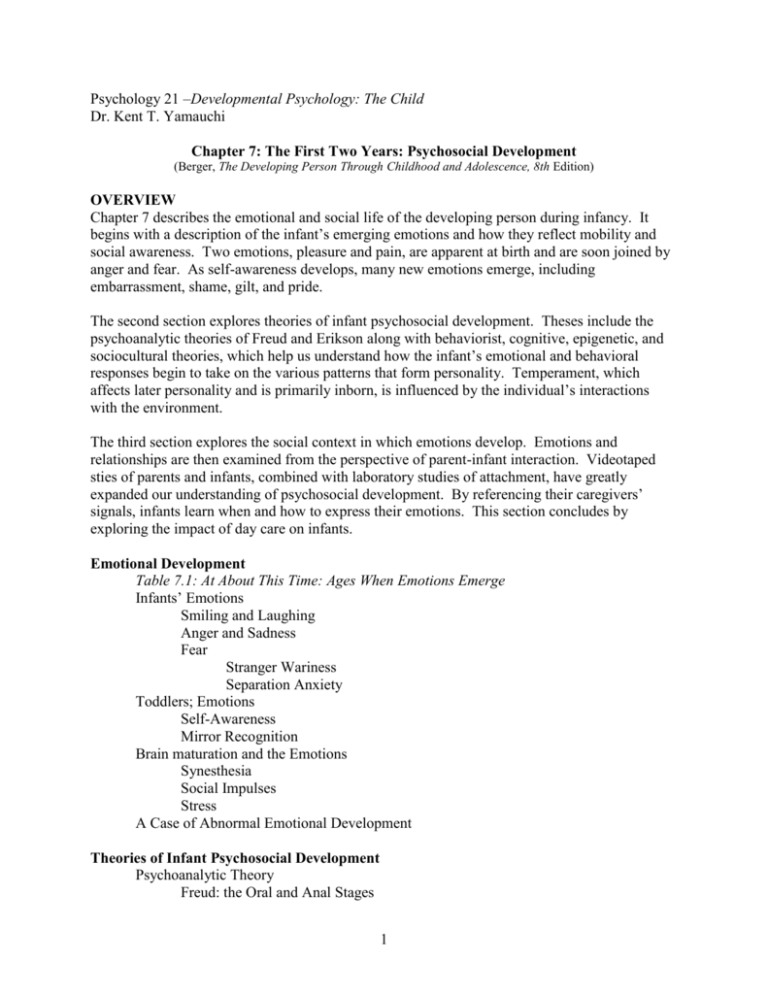
Psychology 21 –Developmental Psychology: The Child Dr. Kent T. Yamauchi Chapter 7: The First Two Years: Psychosocial Development (Berger, The Developing Person Through Childhood and Adolescence, 8th Edition) OVERVIEW Chapter 7 describes the emotional and social life of the developing person during infancy. It begins with a description of the infant’s emerging emotions and how they reflect mobility and social awareness. Two emotions, pleasure and pain, are apparent at birth and are soon joined by anger and fear. As self-awareness develops, many new emotions emerge, including embarrassment, shame, gilt, and pride. The second section explores theories of infant psychosocial development. Theses include the psychoanalytic theories of Freud and Erikson along with behaviorist, cognitive, epigenetic, and sociocultural theories, which help us understand how the infant’s emotional and behavioral responses begin to take on the various patterns that form personality. Temperament, which affects later personality and is primarily inborn, is influenced by the individual’s interactions with the environment. The third section explores the social context in which emotions develop. Emotions and relationships are then examined from the perspective of parent-infant interaction. Videotaped sties of parents and infants, combined with laboratory studies of attachment, have greatly expanded our understanding of psychosocial development. By referencing their caregivers’ signals, infants learn when and how to express their emotions. This section concludes by exploring the impact of day care on infants. Emotional Development Table 7.1: At About This Time: Ages When Emotions Emerge Infants’ Emotions Smiling and Laughing Anger and Sadness Fear Stranger Wariness Separation Anxiety Toddlers; Emotions Self-Awareness Mirror Recognition Brain maturation and the Emotions Synesthesia Social Impulses Stress A Case of Abnormal Emotional Development Theories of Infant Psychosocial Development Psychoanalytic Theory Freud: the Oral and Anal Stages 1 Erikson” Trust and Autonomy A View From Science: Toilet Training: How and When? Behaviorism Cognitive Theory Epigenetic Theory Temperament New York Longitudinal Study The Big Five Sociocultural Theory Ethnotheories Proximal and Distal Parenting Table 7.2: Play Patterns in Rural Cameroon and Urban Greece A Personal Perspective: “Let’s Go to Grandma’s” The Development of Social Bonds Variations Among Infants Figure 7.1: Do Babies’ Temperament Change? Goodness of Fit It’s Not All Genetic Synchrony In the First Few Months When Synchrony Disappears Attachment Table 7.3: At About This Time: Stages of Attachment Secure and Insecure Attachment Table 7.4: patterns of Infant Attachment Measuring Attachment Insecure Attachment and Social Setting Table 7.5: Predictors of Attachment Type Social Referencing Fathers as Social Partners Latino Fathers Comparing Fathers and Mothers Infant Day Care International Comparisons Types of Nonrelative Care Table 7.6: High-Quality Day Care Effects of Infant Day Care Conclusions In Theory and in Practice Table 7.7: At About This Time: Infancy Summary 2
